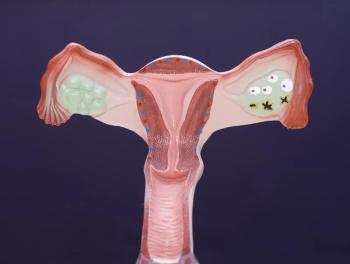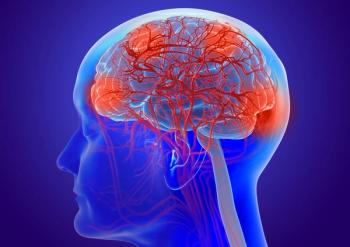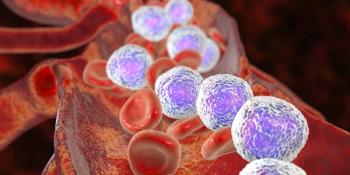
- ONCOLOGY Vol 20 No 4
- Volume 20
- Issue 4
Handbook of Brain Tumor Chemotherapy
After 2 decades of minimal progress, there have been important advances in the treatment of brain tumors with chemotherapy. A trial conducted by the European Organization for Research and Treatment of Cancer (EORTC) and the National Cancer Institute of Canada (NCIC) recently demonstrated the benefit of radiation therapy with concomitant and adjuvant temozolomide (Temodar) chemotherapy for glioblastomas. There is also increasing evidence that chemotherapy may be beneficial for anaplastic and low-grade gliomas, as well as a variety of less common tumors.
ABSTRACT: After 2 decades of minimal progress, there have been important advances in the treatment of brain tumors with chemotherapy. A trial conducted by the European Organization for Research and Treatment of Cancer (EORTC) and the National Cancer Institute of Canada (NCIC) recently demonstrated the benefit of radiation therapy with concomitant and adjuvant temozolomide (Temodar) chemotherapy for glioblastomas. There is also increasing evidence that chemotherapy may be beneficial for anaplastic and low-grade gliomas, as well as a variety of less common tumors.
After 2 decades of minimal progress, there have been important advances in the treatment of brain tumors with chemotherapy. A trial conducted by the European Organization for Research and Treatment of Cancer (EORTC) and the National Cancer Institute of Canada (NCIC) recently demonstrated the benefit of radiation therapy with concomitant and adjuvant temozolomide (Temodar) chemotherapy for glioblastomas. There is also increasing evidence that chemotherapy may be beneficial for anaplastic and low-grade gliomas, as well as a variety of less common tumors.
The Handbook of Brain Tumor Chemotherapy, edited by Dr. Herbert Newton, is a timely comprehensive reference that summarizes the current state of chemotherapy for brain tumors. Although the title suggests a focus on chemotherapy, there is also significant emphasis on more novel forms of drug therapy such as targeted molecular agents and intratumoral chemotherapy. The book is written by experts in the field, primarily from the United States, and succeeds admirably in its goal.
The book contains over 500 pages and 36 chapters divided into four sections. The first section, entitled Pharmacology and Clinical Applications, includes chapters providing an overview of brain tumor epidemiology and histopathology, clinical pharmacology of chemotherapy, interactions with antiepileptic drugs, brain tumor models, microarray and proteomics, chemotherapy resistance and clinical trial designs.
The second section, Molecular Biology and Basic Science, provides an overview of the molecular genetics of brain tumors, regulation of the cell cycle, apoptosis, growth factor signaling pathways and receptor tyrosine kinases, Ras pathways and farnesyl transferase inhibitors, PI3kinase/Akt/mTor pathways, tumor invasion, angiogenesis, and the blood-brain barrier.
The third section, entitled Innovative Approaches To Chemotherapy Delivery, includes chapters on intra-arterial chemotherapy, blood-brain barrier disruption, interstitial chemotherapy, intratumoral administration and convection-enhanced delivery, marrow ablative chemotherapy with stem cell rescue, chemotherapy-activating gene therapy, as well as a chapter on cerebrospinal fluid spread of tumors and their treatment.
The fourth section contains 13 chapters reviewing specific chemotherapy treatments for individual tumors, including one on pediatric brain tumors.
The book is directed primarily at clinicians but will also be useful for those conducting research in this field. The chapters are generally well-written and extensively referenced. Most of them provide excellent overviews of their topics, especially the ones dealing with the interaction of chemotherapy with antiepileptic drugs, signaling pathways, and invasion. The chapters discussing targeted molecular agents, tumor invasion, and the cell cycle are accompanied by beautiful color illustrations.
As with all multiauthor texts, there is some variability in the quality and comprehensiveness of the chapters. A few are not written by recognized experts in the specific topics covered, but they generally succeed in providing useful overviews. One limitation of any book dealing with a rapidly moving field is that some of the chaptersespecially those dealing with targeted molecular therapies and the inhibition of angiogenesisare somewhat outdated. Many chapters contain references only up to 2004, although a few have references from 2005.
The field is moving toward combination therapies, and this is dealt with only very briefly in most chapters. Likewise, a greater emphasis on certain topics such as complications of chemotherapies, novel chemotherapeutic agents being considered for clinical trials, and strategies of overcoming drug efflux pumps to improve penetration into tumors would have been useful.
That said, the limitations are relatively minor and do not detract from the overall excellence of the book. The editor and authors are to be congratulated on providing a timely and valuable reference on chemotherapy for brain tumors. This is a book that will be very useful for all neuro-oncologists and general oncologists treating patients with brain tumors.
Patrick Y. Wen, md
Articles in this issue
over 19 years ago
Budget Plan Cuts NCI Spending by 0.8% for Fiscal Year 2007over 19 years ago
FDA Guidances for Early Human Testing of New Drugsover 19 years ago
Prostate Treatment Decisions Based on Perception More Than Factover 19 years ago
Study Shows MRI Can Detect Breast Disease Missed by Mammographyover 19 years ago
FDA Approves Cetuximab to Treat Head and Neck Cancerover 19 years ago
The FDA and the Person With Cancer: Give PROs a Chanceover 19 years ago
Poverty Trumps Race to Explain Poor Prostate Cancer Outcomesover 19 years ago
AJN Releases Report on Care for Long-Term Cancer SurvivorsNewsletter
Stay up to date on recent advances in the multidisciplinary approach to cancer.


















































































